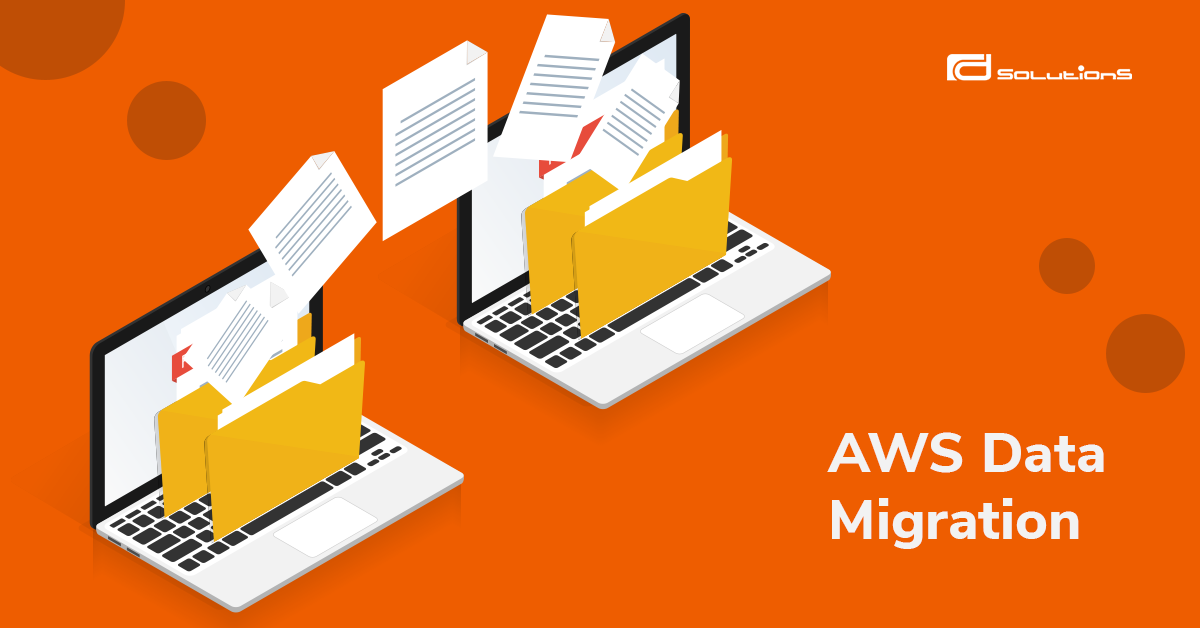The use of data has recently gained mainstream popularity.
The term Big Data takes center stage in the IT industry, often being cited as one of the three pillars of technology development in recent years, along with AI and cloud computing.
Controversies surrounding the secure and ethical use of data have also made headlines and led to investigations into the practices of the biggest tech companies in the world.
With organizations moving more data to the cloud than ever before, it’s vital to have a solid understanding of the best practices and risks regarding data migration
That said, let’s look at how AWS handles data and database migrations and why companies decide to use their services.
AWS Data Migration
АWS has vast experience with cloud migrations, which has allowed the company to define the most common problems when it comes to data migrations and offer a variety of solutions.
Some of the crucial questions companies have when transitioning from on-premise to the cloud are: How long will the migration take? How much data can be transferred? Will there be any disruptions or lots of downtime during the migration?
AWS has developed a formula to calculate how much data can be transferred to their cloud, how far and how quickly:
Number of days = (Total bytes) / (Megabits per second * 125 * 1 000 * Network usage * 60 seconds * 60 minutes * 24 hours)
AWS also supports both small and large-scale data migrations.
Small-scale migrations are pretty straight-forward and don’t require much if any outside assistance. Unmanaged open source tools like rsync, for example, are popular with customers who want to copy data to S3 buckets.
On the other hand, some services are created and managed by AWS and their partners to support more complex data migrations. The AWS Direct Connect and AWS Storage Gateway Services are ideal for establishing a unique network connection between a local environment and AWS or allowing on-premise apps to use AWS cloud storage.
Regardless of the specifics AWS provides useful frameworks, tools and services which all companies can use to answer their most significant questions.
AWS Database Migration Service (DMS)
At its core, AWS DMS is a server that runs replication software.
When it comes to database migrations a lot of the same questions regarding possible downtime, security, and duration of the migration are also relevant. With over 130 000 databases migrated with AWS DMS, these concerns have been and continue to be addressed.
During the migration process, the source database remains fully operational and can be synchronized with the destination database for as long as it needs to be.
Both homogenous migrations between the same or compatible source and target databases (e.g., from Oracle to Oracle) and heterogeneous migrations (e.g., from Microsoft SQL Server to MySQL) are supported. Homogenous migrations are easier to perform and make for an ideal opportunity to test AWS and get familiar with its layout and functionalities.
Database migrations with AWS require source and destination connections that tell the DMS where the data should be extracted from and uploaded to.
With homogenous migrations, you only need to set a migration task with these connections and let the service take care of the rest. Heterogeneous migrations, on the other hand, require the use of AWS’s Schema Conversion Tool, which converts elements of the source database (schema and database code objects) to match those of the target database. After the conversion is complete, AWS DMS takes over and performs the migration.
In both instances, the source database can be located on-premises, run on Amazon Elastic Compute Cloud (EC2), or it can be an Amazon RDS Database. The destination database can be on Amazon EC2 or Amazon RDS.
AWS DMS provides all the advantages that come with utilizing the cloud successfully like agility, scalability, cost-savings and more. The service offers a pay-as-you-go payment model and allows for quick increases or reductions of storage to meet current workloads.
Besides database migrations, companies also use this service for consolidation of databases, continuous data replication, and development and testing.
Conclusion
The cloud offers opportunities to deal with lots of the problems that come with running your own data center and storing data on-premise.
As the transition to cloud computing continues the importance of quick, efficient and secure data migrations also increases.
Businesses that gather and process large amounts of data must be extremely cautious to avoid overspending and cavalier use of sensitive or personal data.
AWS provides an opportunity to migrate data safely, reduce and manage the cost of working with data, and find new ways to use existing data.
If you’re looking to migrate parts of your IT portfolio to the cloud R&D Solutions can help you audit your current IT infrastructure and develop a detailed strategy for a successful move to the AWS cloud. You can learn more about how we help businesses expand their digital agenda here.

